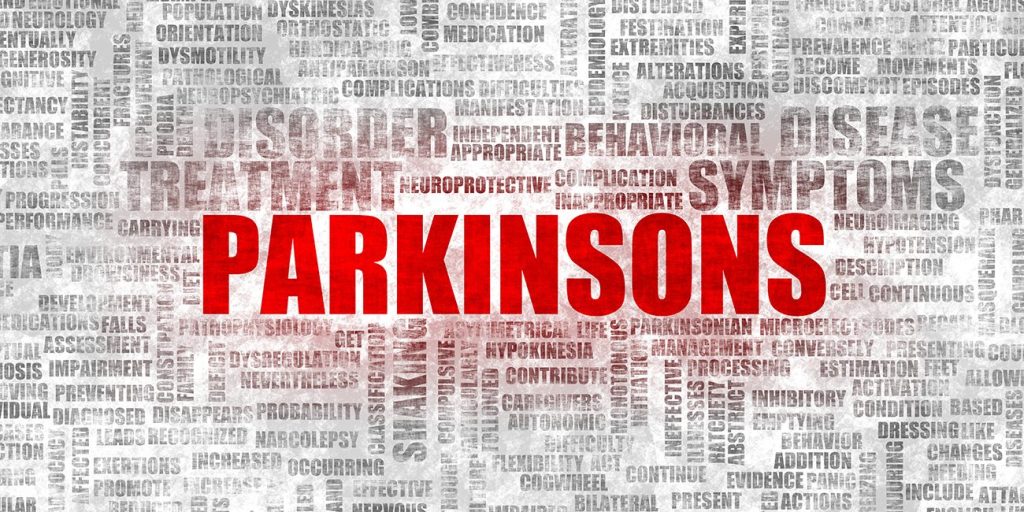Read Part One of this article for background on Parkinson’s Disease and vision impairment.
It is important to respect professional boundaries and know when to refer a “fighter” to a neuro-opthamologist or an occupational therapist.

Here are some simple and safe tips to share with your “fighters”:
1. Consult a neuro-opthamologist or neuro-optometrist regularly.
2. Bifocal wearers need to be cautious when walking up and down stairs. Depth and distance may be compromised and pose a fall risk. *Progressive lenses are even worse.
3. Double-vision (diplopia): ask a neuro-opthamologist about prism glasses (meant to improve eye alignment).
4. Dry eyes/Irritation: apply a warm compress twice a day to relieve dry eyes. (Ask the doctor about eye drops available to treat symptoms.)
5. Improve lighting in high fall risk areas, such as stairs, steps, bathroom.
6. Remove tripping hazards in home, such as throw rugs (or tape them down), clutter, unnecessary furniture, power cords.
7. Color contrast options:
- Eating: Use different colored plate and placemat. For example, a white plate on a black placemat; pour dark liquids (like coffee) into a light cup. Set timer for food rather than visually checking.
- Bathroom: Use dark floor mats if the floor is a lighter color’ magnifying mirror for makeup or shaving; contrasting towel behind head to help see head/hair
- Stairs: Apply colored duct tape to edge of steps.
- Throughout home: Place brightly colored tape on small items that are hard to find (light switches, drawstrings on blinds).
- Technology: Change the contrast of the screen and increase font size for reading messages.
Vision Specific Exercises
“Fighters” should always consult his or her physician before beginning vision exercises with their fitness professional. Vision exercises are specific to the problems. The following exercises are a few examples for vergence movement problems, diplopia (double vision) and motor control and endurance. Do each exercise 5-10x with a short break between exercises.
- Convergence Drill – “pencil pushups”
- Hold a pencil at arms length.
- Slowly bring pencil closer to nose and keep eyes focused on pencil
- Stop when double-vision occurs.
- Motor-control and Endurance Drill
- Practice looking up and down slowly. (The head does not move)
- Practice looking left and right slowly.
- Practice looking diagonally. (Down to left hand then over right corner)
- Picture a figure 8 (vertical and horizontal) and follow the sign.
- Accommodation (also known as visual searching)
- Hold a pencil close to your eyes.
- Look at the pencil then look at an object in the distance.
- Now look back at the pencil.
Exercises to improve ocular function are easy to add to any program. To maximize your “fighters” time, combining visual exercises with gait/balance and strength training exercises may increase reaction time and agility skills. Below are three exercises you can do with your “fighters” in a class or private session to address multiple issues at one time. Always remember to adapt exercises to appropriately fit the “fighters” skill level.
Stand with one foot flat and on tip-toes of the other foot.
- Perform an arm exercise (bicep curl for example) while looking right and left.
Haytoss (equipment options: tube, single weight, medicine ball or clasped hands)
- Squat stance (reserve lunge stance for “fighters” with higher skill levels). Squat and tap the front of the left knee.
- Stand and rotate hips to head to the upper opposite corner.
*Eyes follow the diagonal pattern.
½ Jack (or lateral lunge) with a small ball toss up.
- Stand or sit with feet together.
- Hold a fist size ball in the right hand. (juggling ball for example)
- Step the right foot (or laterally lunge) to the right AND toss the ball up at the same time.
- Step back to start position and repeat on the same side for a total of 10 reps.
*To progress the drill use the opposite hand to toss the ball up.
*Eyes MUST follow the ball up and down.
Vision issues affect everyday life for people living with Parkinson’s Disease. You now have “tools” in your tool belt to help you tackle your “fighters” vision issues.
If you’re interested in working with this population, check out Colleen’s online course, Parkinson’s Disease Fitness Specialist.
Co-authored by Colleen Bridges, M. Ed, NSCA-CPT; Renee Rouleau-B.S., PhD student, Jacobs School of Biomedical Sciences, University at Buffalo; Kristi Ramsey, OTD, OTR/L.
Reviewed By: Dr. Jamie Ho, OD, FAAO, FCOVD
References
- Berliner JM, Kluger BM, Corcos DM, Pelak VS, Gisbert R, McRae C, Atkinson CC, Schenkman M (2018) Patient perceptions of visual, vestibular, and oculomotor deficits in people with Parkinson’s disease. Physiother Theory Pract. doi: 10.1080/09593985.2018.1492055 [PubMed].
- Borm, C., Smilowska, K., de Vries, N. M., Bloem, B. R., & Theelen, T. (2019). How I do it: The Neuro-Ophthalmological Assessment in Parkinson’s Disease. Journal of Parkinson’s disease, 9(2), 427–435. https://doi.org/10.3233/JPD-181523
- www.DavidPhinneyFoundation.org.
- Mayo Clinic, (2020)“Parkinson’s Disease Symptoms and Causes.” http://wwwmayoclinic.org20376055.
- Nowacka B, Lubinski W, Honczarenko K, Potemkowski A, Safranow K (2014) Ophthalmological features of Parkinson disease. Med Sci Monit 20, 2243–2249.
- Witkovsky, P. Dopamine and retinal function. Doc Ophthalmol 108, 17–39 (2004). https://doi.org/10.1023/B:DOOP.0000019487.88486.0a.

